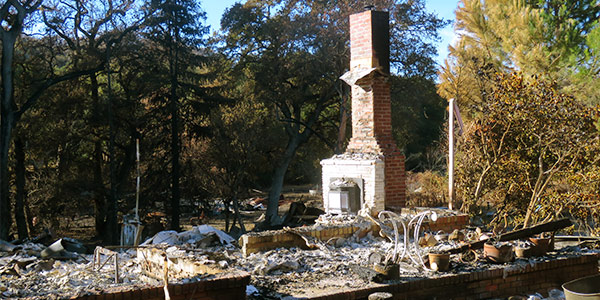By Hudson Sangree and Robert Mullin
The California Public Utilities Commission opened an investigation Wednesday into the massive power shutoffs that placed millions of residents in the dark several times in October as part of efforts to prevent utility-sparked wildfires.
The purpose of the inquiry is to determine “whether California’s investor-owned utilities prioritized safety and complied with the Commission’s regulations and requirements with respect to their late 2019 Public Safety Power Shutoff [PSPS] event,” according to the order instituting investigation (OII).
“It is important for the CPUC to determine if the utilities complied with using public safety power shutoffs as a last resort and to collect the knowledge gained towards any revisions needed for next year,” Commissioner Genevieve Shiroma said. “It is essential our protocols and the utilities’ practices provide the best service and protections for customers in the face of wildfires.”
The state Public Utilities Code has given utilities authority for more than a decade to intentionally blackout parts of their grids to protect public safety, particularly in the dry windy conditions each fall that have given rise to the state’s most devastating wildfires. But the immense scope of this season’s blackouts far exceeded anything that’s occurred before.
PG&E shut off power to 729,000 residential and business customer accounts over three days starting Oct. 9, the PUC said. It turned off electricity to 975,000 customers in 38 counties Oct. 26. And it shut down power to nearly 516,000 customers three days later on Oct. 29.
The average household size in California is about 2.6 residents per home, according to the U.S. Census Bureau, meaning the blackouts may have affected approximately 1.6 million residents, 2.15 million residents and 1.14 million residents, respectively, after accounting for the roughly 15 percent of PG&E customers that are commercial or industrial users.
Southern California Edison and San Diego Gas and Electric also blacked out customers but not on the scale of PG&E. SCE’s largest shutoff occurred Oct. 30, affecting 86,000 customers, while SDG&E blacked out 24,600 customers on Oct. 29.
The CPUC first wants to know if the IOUs adequately notified the public, communicated with first responders and protected public safety during the blackouts, among other questions.
“In later phases of this proceeding, the Commission may consider taking action if it finds violations of statutes or its decisions or general orders have been committed and to enforce compliance, if necessary,” the CPUC order said.
The CPUC’s Safety and Enforcement Division will conduct the investigation in conjunction with outside consultants, it said. The IOUs must file initial responses to the OII by Dec. 13.
The investigation will examine whether regulations governing power safety shutoffs could be improved, the order said.
“The Commission opens this investigation as a companion to Rulemaking (R.) 18-12-005, the Commission’s rulemaking to examine utility de-energization of powerlines in dangerous condition,” it said. “This investigation will serve as a forum for taking evidence to evaluate both the effectiveness and impacts of all phases of the PSPS events.”
‘Where is Safety?’
Public speakers Wednesday said the shutoffs have upended their lives, leaving them fearful and uncertain.
Will Abrams and his family lost their Sonoma County home in the Tubbs Fire of October 2017, running for their lives as their neighborhood burned down around them. The fire leveled parts of Santa Rosa, Calif., and surrounding communities, killing 22 people and destroying more than 5,600 structures.
The Abrams family had to leave their home during one of the first two PG&E power shutoffs in October, then had to evacuate again as the Kincade Fire swept through Sonoma County during a subsequent PSPS event later in the month.
Like many others, they didn’t know where to go to protect themselves. As they drove south through the San Francisco Bay Area, they saw wildfires along the freeways, and Abrams said he wasn’t sure how far to drive before his family would be out of danger.
“I think many folks in California are wondering ‘where is safety?’” Abrams told the commissioners.
“Many Californians are debating about whether California is still safe,” he added, saying the state is on the front lines of climate change. “Is this a safe place to live?”
Nevada City Mayor Reinette Senum laid out the “laundry list” of impacts PG&E’s shutoffs had on her Sierra Foothills town, including the closure of “mom and pop” businesses, grocery stores and schools, the loss of internet, cell phone and 911 service, and the disruption to tourism.
“Basically, we were sent back into the Dark Ages,” she said.
Senum cautioned the commissioners about the downstream “unintended consequences” of upending the local economy in her region, which is vital to supporting environmental efforts that protect the San Francisco Bay Area’s watershed from the toxic legacy of goldmining.
A catastrophic fire like the one that devastated Paradise, Calif., in November 2018 would scorch the soil in the region and release heavy metals that could leach into the water supply for 25 million end users, including farmers and ranchers in California’s Central Valley and wine country growers, she warned.
Senum advocated for a public takeover of PG&E to put the grid “back in the hands of the people.”
“We have everything to lose and we have everything to gain,” Senum said. “We will take better care of the transmission lines and make sure to decentralize the energy production so that it’s as safe as possible and as reliable as possible.”
She said continued shutoffs mean “we will cease to exist as a community.”
“And the CPUC and PG&E, and all the citizens of California, are going to lose the best stewards of your watershed.”



